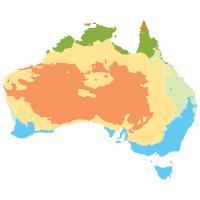Due to demand – I have produced a detailed user manual for the Atlas of Living Australia’s Spatial Portal (SP). This is intended to be a stand-alone document that provides the context for, and philosophy behind the SP as well as a deeper insight into its many tools. The manual covers all aspects of the SP with advice, examples and references. I’m very grateful to Margaret Cawsey, John Tann and John Busby for providing extensive feedback and suggestions. I hope that all of their comments have been incorporated.

In putting together this document, an issue we all face is that the SP and other Atlas tools are constantly responding to user feedback and improving through the work of a talented programming team. As such, this document will become out of date over time but we will update the manual as often as possible after system updates.
Some items that we are looking forward to work on include:
- Greatly extending the current Area Report – to integrate a far wider range of bio-environmental information within the Atlas. Comprehensive bio-oriented reports on any defined area will be of great use for local Government, environmental impacts assessments, land owners, land managers, research etc. As ever, ‘area’ in the SP can be defined in any of 14 different ways.
- Develop a library of scripts, leveraging existing Atlas web services, to enable users of the R package to access Atlas data. This is in response to feedback from researchers that efficient access to Atlas data via R will be highly valuable. This work will also improve the web services themselves and deliver some updated documentation on how to use these services. We are still considering integrating more analysis tools within the portal itself but this work with the R software will immediately support a wide range of analyses.
- Improve our approach to data on invasives, aliens, pests etc – such that they parallel how we currently handle conservation status. This domain is of immense cost/value to Australia so it is vital that we present a useful and consistent interface to relevant information that can be used for the broadest applications. This includes the ability to answer questions such as: what invasives exist in a given area – and, by further leveraging our lists tool we will soon be making this information available in the extended Area Report as mentioned above.
- Continue outreach to the scientific community.
- I visited Professor Steven Chown and Associate Professor Melodie McGeoch at Monash in September and it was gratifying to see how the Atlas is being used in teaching and research at Monash. We are looking to ways that the Atlas can better assist in this environment.
- A presentation on ‘Data Quality’ has been accepted for ESA2013. This continues to be a hot topic, and one that the Atlas continues to work on.
- We hope to have a resource available in the near future to help with the delivery of targeted resources for education and training purposes.
- In general, we continue to review and manage the spatial layers in the Spatial Portal as resources allow – so do do let us know if there are particular layers and climate models/scenarios that you would like to have incorporated. Note that we have recently included the Koppen climate classification (see image above).
Feedback on any of these items would be valued.
Lee Belbin